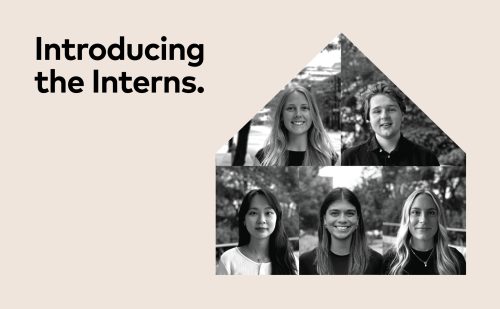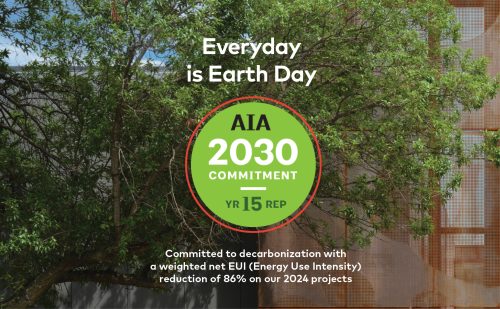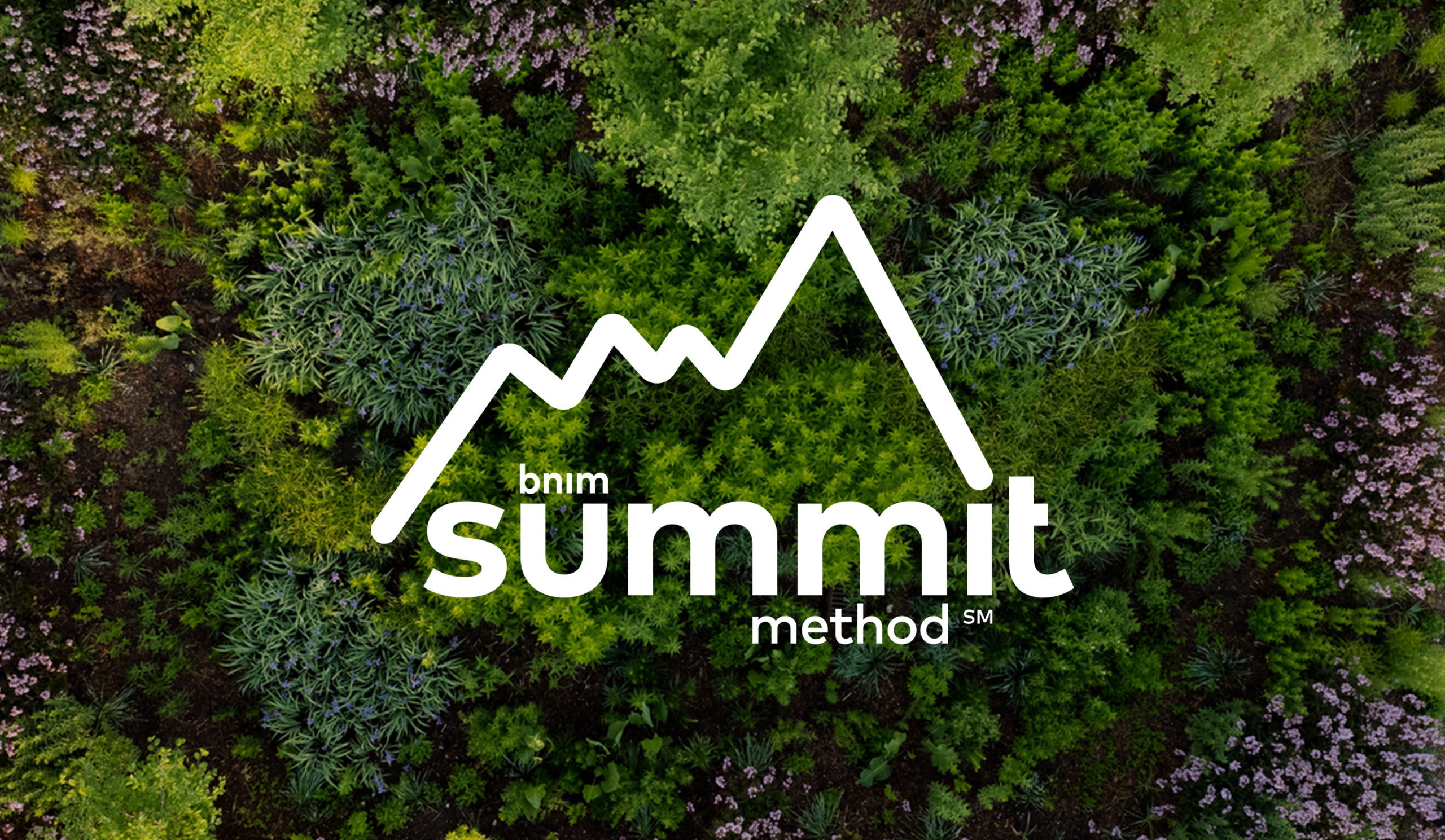
Doing Well By Doing Good
What if your next building investment could reduce long-term costs, cut carbon, and improve occupant health all at once?
The Summit MethodSM is a new comparative analysis methodology developed by BNIM to help clients holistically map building performance and cost scenarios for smarter decision-making across both existing and new building solutions.
Incorporating energy and financial modeling, the Summit Method enables comparative cost-benefit scenario planning that supports performance goals, financial prosperity, and positive outcomes for people and the planet.

Doing Well By Doing Good
Driving company profit – doing well – is often viewed as conflicting with investment in strategies with positive health, environmental, and social impacts – doing good. Many companies and institutions struggle with living up to their mission and values when making capital improvement decisions, falling into the common trap of considering first-cost as the only factor when making a decision. BNIM’s approach flips the script on this perceived conflict by connecting the outcomes of each rather than evaluating them separately.
Prioritizing the alignments and natural links between the variables of profit, people, and planet impacts (the triple bottom line), we seek to uncover opportunities and design solutions that can maximize value and positive impact at multiple scales, from reducing carbon emissions and operational costs to enhancing community health and welfare.
The Summit Method demonstrates how businesses can be successful in doing well by doing good.
Our Process
The Summit Method acts as a “trail guide” for our clients as they navigate decision-making and comparison of performance alternatives, making the ascent toward their future goals – the “Summit.” Going beyond basic development proforma, BNIM developed the Summit Method to provide a comprehensive outlook of multiple future performance scenarios and outcomes.
The Summit Method’s analysis equips our clients with data-driven and multi-lens insight covering a range of considerations, including:
- Basic first-cost and ROI (traditional proforma evaluation factors)
- Energy and water demand and production
- Building utility efficiency, cost, and resiliency
- Occupant/resident health and performance
- Community impact and buy-in
- Financial incentives, grants, and non-traditional resources
- Material risk factors and context
- Cost of ownership over time
The Summit Method’s process builds on the foundation of five guiding phases: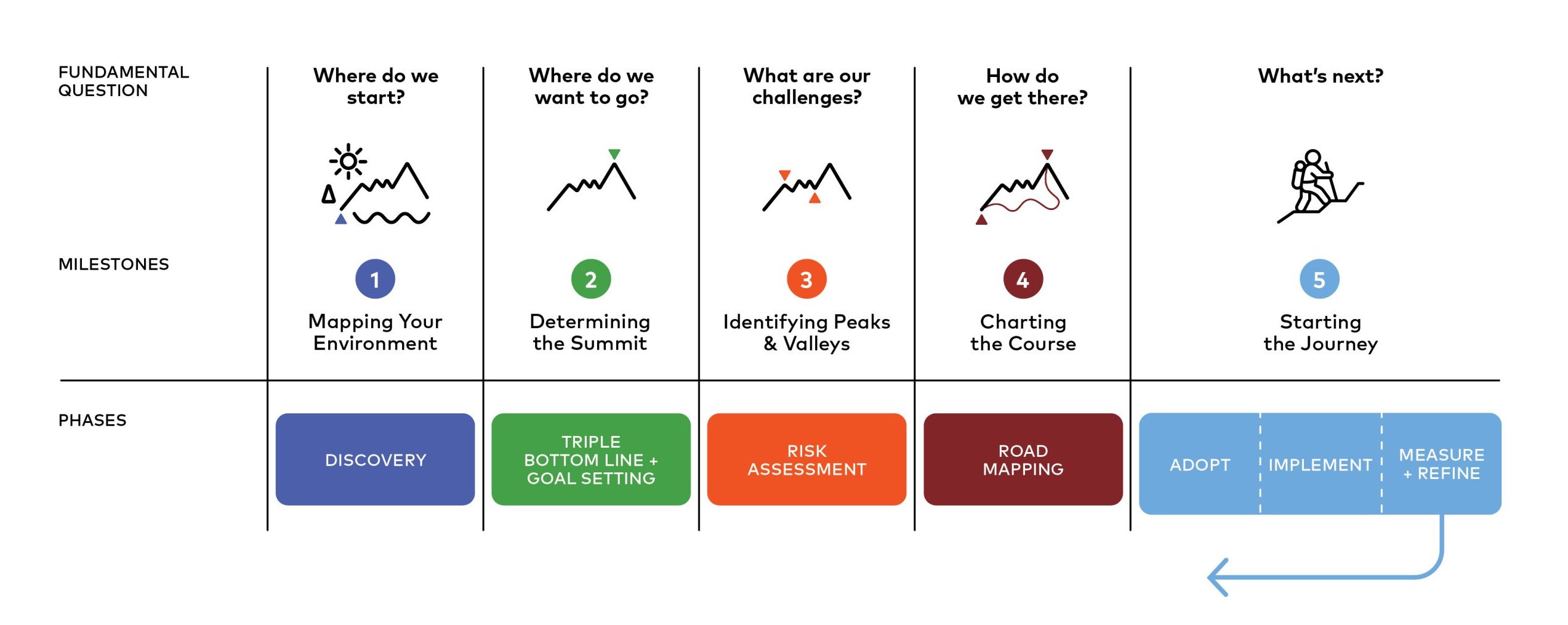
Phase 1 – Discovery
Mapping Your Environment – Where do we start?

BNIM works with our clients to understand the context within which decision-making occurs, including any internal and external pressures that may exist, alignment with local building and energy codes, and understanding boundaries of goals to be addressed. Like beginning at base camp, we assess where clients are in relation to their context and their performance and organizational goals. We determine this through factors such as operational policy and performance evaluations, existing utility data, and current business practices.
Key Considerations:
- Cultural, political, environment, financial-context of business
- Single materiality risk assessment
- Local codes and incentives
- Regional goals and plans
Phase 2 – Triple Bottom Line + Goal Setting
Determining the Summit – Where do we want to go?

We examine how our clients’ stated vision and mission can inform performance goals and project cost of ownership, utility performance, employee well-being, resilience to market and weather impacts, and more. How can your building(s) become a true manifestation of your mission?
Key Considerations:
- Current state of business within context
- Mission and Vision alignment
- Emergent goals integrated with vision and mission
- Industry commitments
Phase 3 – Risk Assessment: Scenario / Financial Analysis
Identifying Peaks and Valleys – What are our challenges?

To determine the best path forward, it is critical that we understand the decision-making crossroads that will define the project “peaks and valleys,” or potential opportunities and risks of choices around cost and performance. There are risks in both taking and not taking an action that need to be understood.
This step in our process clarifies the purpose of our clients’ goals and identifies the measures of success at the heart of organizational decision-making.
Key Considerations:
- Risk and vulnerability assessment – double materiality
- Financial, cultural / political, environmental variables
- What is the risk of failure?
- How do we compare decisions?
Phase 4 – Road Mapping
Charting the Course – How do we get there?
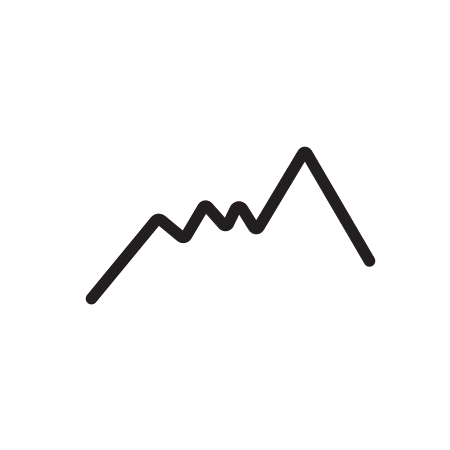
Understanding our clients’ starting points and desired destinations, the Summit Method develops a balanced view of the interconnected impacts of decision-making on the triple bottom line. This guides our path and results in an enhanced proforma. Course corrections are also possible as we conduct data-rich comparisons, which can help guide critical decisions and measure progress along the way.
Key Considerations:
- Goal synthesis and integration
- Milestones of success – checking progress
- Timeline to implement
Phase 5 – Adopt, Implement, Measure, and Refine
Starting the Journey – What’s Next?
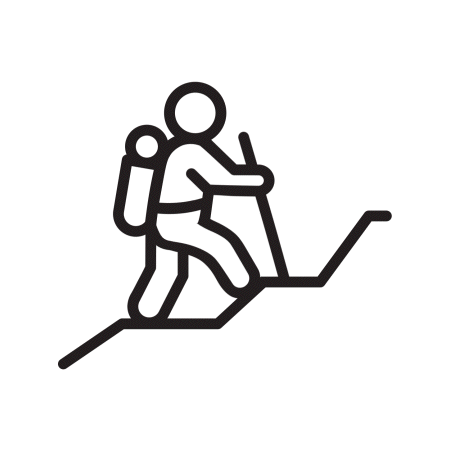
As a dynamic analysis methodology and tool, the Summit Method is designed to flexibly adapt this process to address each of our client’s needs and accommodate evolving parameters and conditions over time, preparing clients to adopt, implement, measure, and refine their approach for the future.
Key Considerations:
- Policy/program roll-out
- Change management
- Active measurement of progress
- Regular progress review
- User feedback surveys
Our Experience, Your Advantage
BNIM developed the Summit Method through years of collaboration with forward-thinking clients seeking to align financial outcomes with environmental and human-centered performance. We have applied this approach across a range of building types, from high-performance retrofits to net-zero new construction, from non-profit community organizations to major civic institutions and Fortune 500 companies. We help clients uncover new value, reduce long-term risk, and achieve greater impact with their investments.
By combining deep expertise with actionable data and a flexible framework, the Summit Method empowers clients to make confident, informed decisions that create lasting benefits for their organizations, occupants, and communities.
For more information on the Summit Method, please contact Jeremy Knoll, BNIM’s Director of Sustainability and Regenerative Design.
